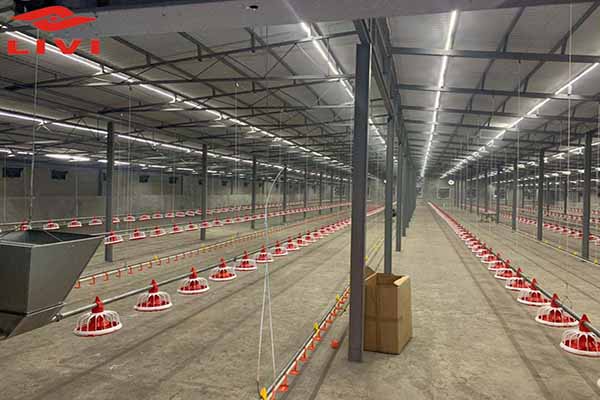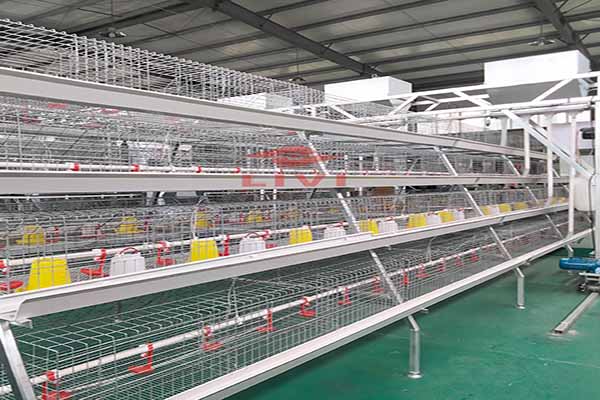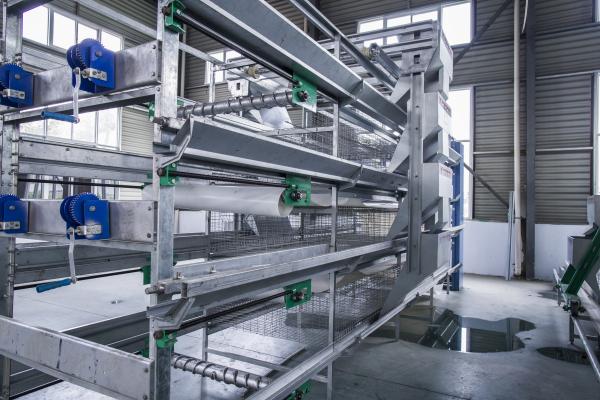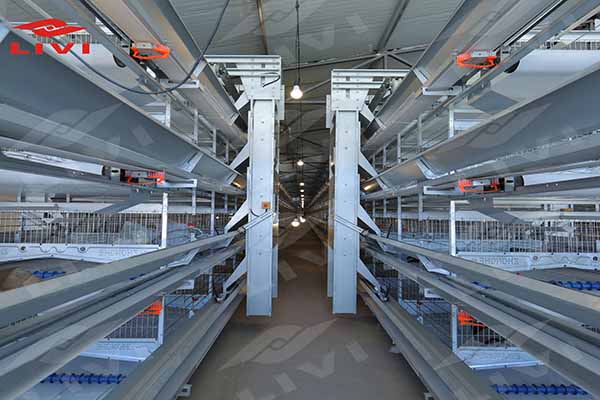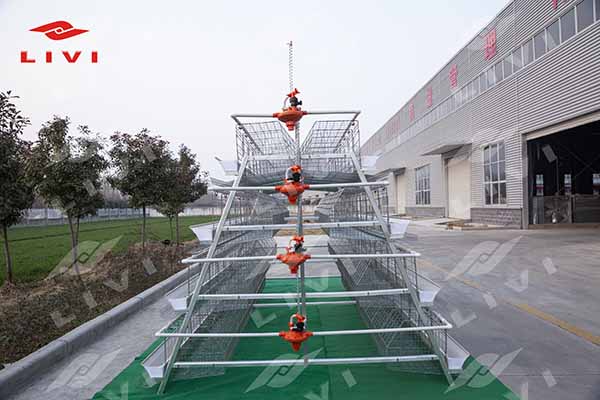Learn how to build a 30,000 layers poultry farm in Uganda. Discover H-type layer cages, automation options, and expert poultry equipment from Livi Machinery.
Introduction
Uganda’s poultry industry has been expanding rapidly, supported by a growing population, rising protein demand, and government support for agricultural modernization. Establishing a 30,000 layers poultry farm in Uganda offers tremendous business potential—but success depends on careful planning, reliable equipment, and efficient management.
From choosing the right site to selecting durable H type chicken layer cages and automation systems, every decision influences farm performance and profitability. This guide provides professional insights and practical steps to help you build a productive and sustainable layer farm in Uganda, featuring advanced solutions from Livi Machinery, a global leader in poultry equipment.
1. Site Selection: The Foundation of Success
A profitable poultry farm begins with the right location. When planning a 30,000 layers poultry farm in Uganda, several environmental and logistical factors must be considered:
- Climate: Uganda’s tropical climate supports poultry production year-round. However, regions with good airflow and moderate temperatures are ideal for intensive farming.
- Water Supply: A consistent and clean water source is essential for both bird welfare and cleaning operations.
- Electricity: Stable power is crucial for automated feeding, egg collection, and ventilation systems. Consider installing backup generators or solar systems.
- Accessibility: Choose a location close to feed suppliers and markets to reduce transportation costs and maintain egg freshness.
Proper site selection ensures smooth operations, compliance with biosecurity regulations, and reduced operational risks.
2. Designing the Poultry House for 30,000 Layers
Housing design plays a major role in bird health, egg production, and operational efficiency. For a 30,000-bird capacity, it’s often best to divide the farm into two or three houses, each accommodating 10,000–15,000 layers.
Key Design Considerations
- Orientation: Align the houses east-west to minimize direct sunlight and heat buildup.
- Ventilation: Ensure good airflow, especially when using H type chicken layer cages, which allow vertical stacking and centralized ventilation.
- Space Utilization: H-type cages enable multi-tier structures, saving floor space and optimizing density.
- Waste Management: Include manure pits or conveyor systems for efficient waste removal.
A well-planned layout maximizes productivity and supports automation integration.
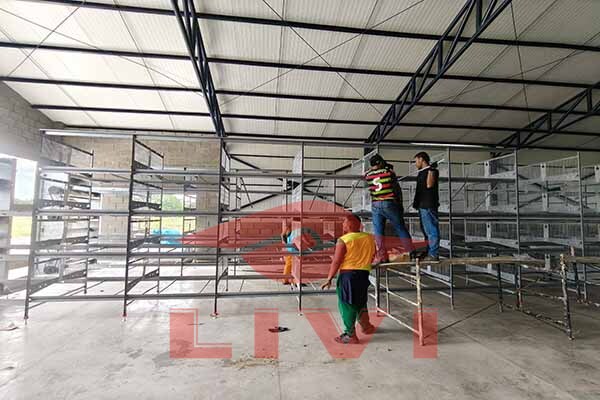
30000 Layers Poultry Farm In Uganda
3. Choosing the Right Equipment: H Type Chicken Layer Cages
For large-scale farms like a 30,000 layers poultry farm in Uganda, H type layer cages are the most efficient and reliable system.
Advantages of H Type Chicken Layer Cages
- High Stocking Density: The vertical “H” structure allows multi-tier stacking (up to 6–8 tiers), accommodating more birds in limited space.
- Automated Compatibility: Perfect for integrating feeding, egg collection, and manure removal systems.
- Better Hygiene: Manure belts separate each tier, preventing contamination and promoting healthy conditions.
- Durability: Made of hot-dip galvanized steel for corrosion resistance, ensuring a service life of 15–20 years.
Compared to A-type cages, H-type designs are better suited for large-scale, fully automated operations. Livi Machinery provides customized H type chicken layer cages that are engineered to fit Ugandan climates and local farm structures.
4. Automation vs. Semi-Automation Systems
Technology has transformed poultry farming, improving efficiency and consistency. When equipping your 30,000 layers poultry farm, you can choose between automatic or semi-automatic systems, depending on your investment scale.
Automatic Systems
Automatic systems provide full control over feeding, egg collection, and waste management, reducing manual labor and increasing output.
- Automatic feeding system: Ensures uniform feed distribution to all layers.
- Automatic egg collection system: Gently transfers eggs to central points, minimizing breakage.
- Automatic manure removal system: Keeps cages clean, reducing odor and disease risks.
- Ventilation and cooling systems: Maintain optimal living conditions regardless of external temperature.
Livi Machinery’s automatic poultry equipment integrates all these systems with intelligent controls, ensuring efficient operation and lower labor dependency.
Semi-Automatic Systems
For farmers starting with limited budgets, semi-automatic systems combine mechanical assistance with manual work. They offer flexibility for future upgrades as your farm grows. Many Ugandan farms start semi-automated and later transition to full automation with Livi’s modular equipment designs.
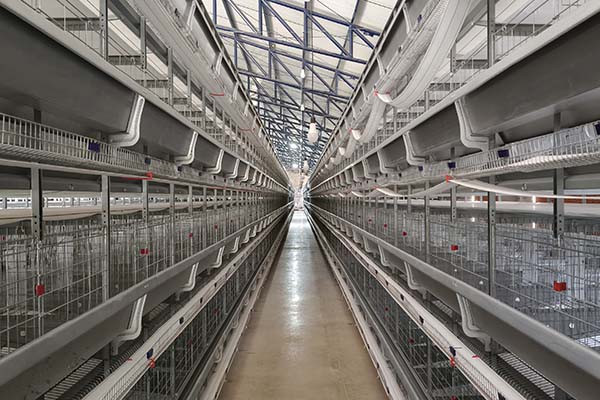
H Type Automatic Layer Battery Cages
5. Cost and Profitability Analysis
Building a 30,000 layers poultry farm in Uganda requires strategic investment planning. Below is a simplified breakdown of common costs:
| Component | Estimated Share of Total Cost |
|---|---|
| Construction (buildings, foundation) | 30–35% |
| Layer cages and equipment | 25–30% |
| Chicks and feed | 25–30% |
| Labor and operations | 10–15% |
Although automatic systems have a higher upfront cost, they drastically reduce labor expenses and increase egg yield consistency. Many modern farms achieve ROI within 18–24 months thanks to automation and efficient management.
With the growing egg demand in East Africa, a 30,000-layer operation can achieve sustainable profits when properly managed.
6. Maintenance and Biosecurity
Efficient maintenance and strict biosecurity practices are vital for keeping productivity high.
Maintenance Tips
- Regularly check feeders, drinkers, and conveyor belts.
- Lubricate moving parts to ensure smooth automation.
- Clean manure belts and egg trays after each cycle.
Biosecurity Measures
- Limit farm access and require visitors to disinfect before entry.
- Maintain optimal temperature and humidity.
- Implement vaccination and veterinary monitoring programs.
Livi Machinery’s equipment is designed with hygiene and ease of maintenance in mind, featuring anti-corrosion materials and automated cleaning functions.
7. Why Choose Livi Machinery
Livi Machinery is a globally recognized manufacturer of advanced poultry farming systems, with decades of experience serving farms across Africa, Asia, and Europe. The company offers H type chicken layer cages, automatic poultry farm equipment, and custom design services tailored to the specific needs of Ugandan poultry farmers.
What Makes Livi Machinery Stand Out
- Proven expertise in large-scale layer farm projects (10,000–100,000 birds).
- Factory-direct supply with high-quality galvanized materials.
- Full support: from design and installation to training and after-sales service.
- Strong track record in Uganda and neighboring countries.
By partnering with Livi Machinery, farmers gain access to advanced automation technology that ensures higher productivity, cleaner operations, and long-term sustainability.
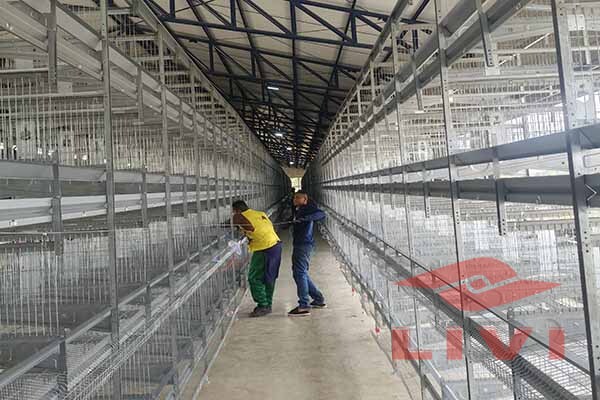
30000 Layers Poultry Farm In Uganda
Conclusion
Building a 30,000 layers poultry farm in Uganda is a profitable venture when guided by modern technology and professional planning. The combination of strategic site selection, durable H type chicken layer cages, and reliable automation will lead to a highly efficient and sustainable egg production system.
With its proven equipment and global expertise, Livi Machinery is your trusted partner in transforming traditional poultry farming into a modern, high-yield business.
📞 Contact Livi Machinery today to get a customized poultry equipment solution for your 30,000-layer project in Uganda.
Frequently Asked Questions (FAQ)
1. How much land is required for a 30,000 layers poultry farm in Uganda?
Typically, about 1.5 to 2 acres of land is sufficient, depending on house layout, storage, and service areas. H-type cages help save space due to their vertical design.
2. What is the lifespan of H type chicken layer cages?
With proper maintenance, high-quality galvanized H-type cages from Livi Machinery can last 15–20 years.
3. Can a small-scale farmer start with semi-automation and upgrade later?
Yes. Many farms in Uganda start semi-automated and later transition to full automation. Livi Machinery’s modular systems make upgrades easy.
4. What is the average cost of building a 30,000-layer farm?
The total cost depends on location, materials, and automation level, but a general estimate ranges from USD 250,000–400,000 for a modern setup.
5. Why are H type chicken layer cages preferred for large farms?
They offer higher density, better ventilation, and are compatible with automatic systems—ideal for commercial farms above 20,000 birds.






